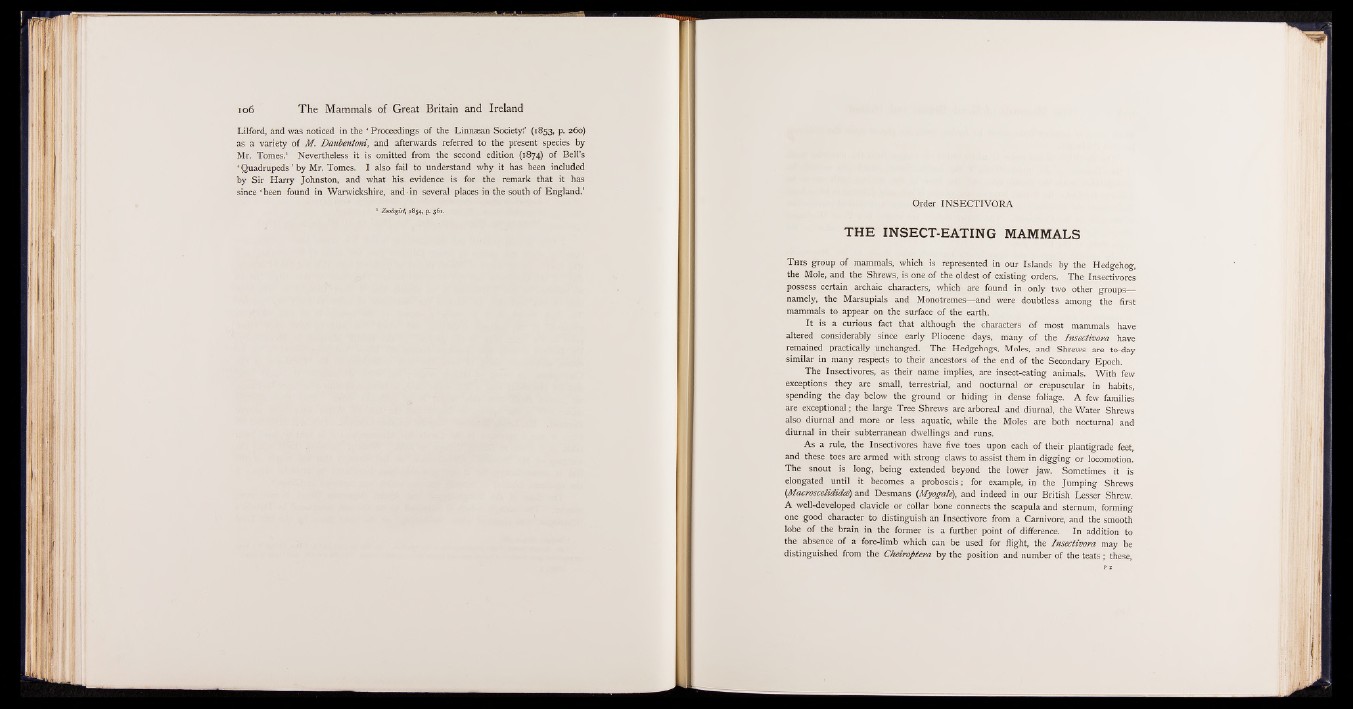
Lilford, and was noticed in the ‘ Proceedings of the Linnaean Society-’ (1853, p. 260)
as a variety of M. Daubentoni, and afterwards referred to the present species by
Mr. Tomes.1 Nevertheless it is omitted from the second edition (1874) of Bell’s
‘ Quadrupeds ’ by Mr. Tomes. I also fail to understand why it has been included
by Sir Harry Johnston, and what his, evidence is for the remark that it has
since ‘ been found in Warwickshire, and • in several places in the south of England.’
Order INSECTIVORA
THE INSECT-EATING MAMMALS
T h i s group of mammals, which is represented in our Islands by the Hedgehog,
the Mole, and the Shrews, is ohe of the oldest of existing orders. The Insectivores
possess certain archaic characters, which: .are found in only two other groups_
namely, the Marsupials and Monotremes— and, were doubtless among the first
mammals to appear on the surface of the earth.
It is a curious fact that although the characters of most mammals have
altered considerably since early Pliocene days, many of the Insectivora have
remained practically unchanged. The Hedgehogs, Moles, and Shrews are to-day
'•similar in many respects to their ancestors of the end of the Secondary Epoch.
The Insectivores, as their name implies, are insect-eating animals. With few
exceptions they are small, terrestrial, and nocturnal or crepuscular in habits,
spending the day below the ground or hiding in dense foliage. A few families
are exceptional; the large Tree Shrews are^arboreal and diurnal, the Water Shrews
also diurnal and more or less aquatic, while the Moles are both nocturnal and
diurnal in their subterranean dwellings and runs.
As a rule, the Insectivores have five toes upon each of their plantigrade feet,
and these toes are armed with strong claws to assist them in digging or locomotion,
The snout is long, being extended beyond the lower jaw. Sometimes it is
elongated until it becomes a proboscis;;; for example, in the Jumping Shrews
(Macroscelidida) and Desmans (Myogale), and indeed in our British Lesser Shrew.
A well-developed clavicle or collar bone connects the scapula and sternum, forming
one good character to distinguish an Insectivore from a Carnivore, and the smooth
lobe of the brain in the former is a further point of difference. In addition to
the absence of a fore-limb which can be used for flight, the Insectivora may be
distinguished from the Cheiroptera by the position and number of the teats; these,